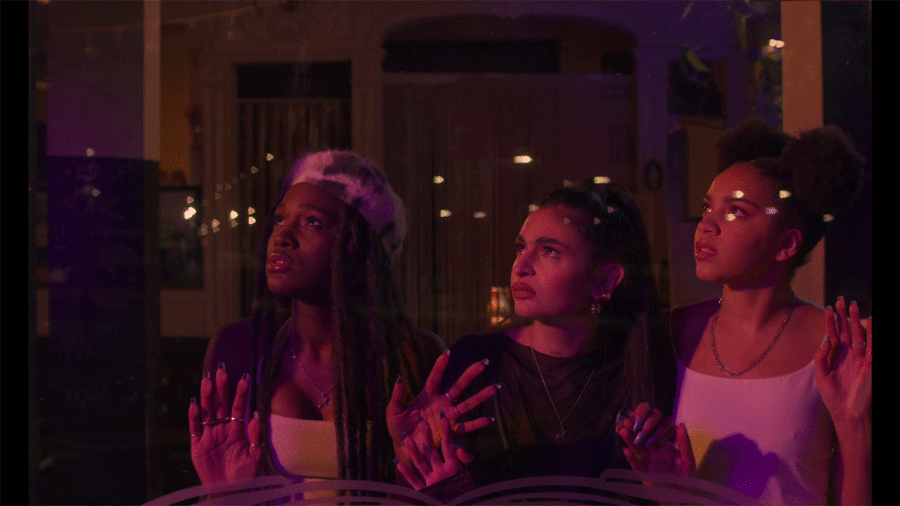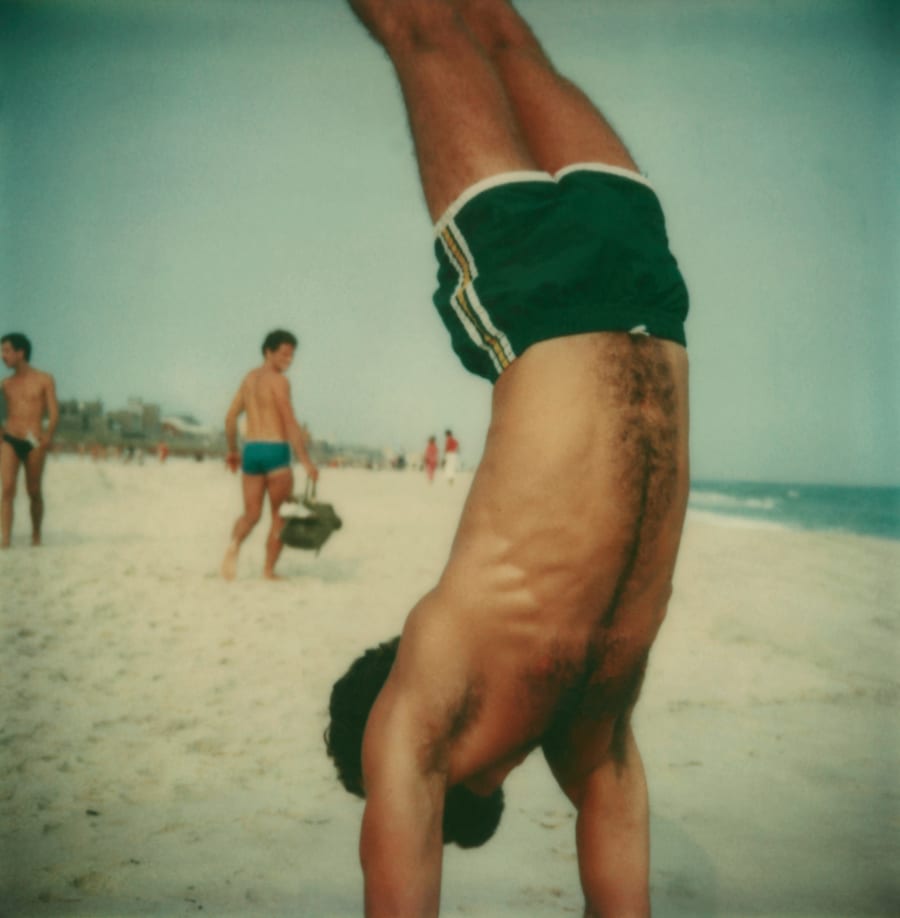With the publication in 2008 of his breakout novel, Une éducation libertine (A libertine education), the French novelist Jean-Baptiste Del Amo has made a name for himself with his sensory, poetic, and sometimes graphic writing, also evident in his more recent works Règne Animal (Animalia, 2016) and Le Fils de l’homme (The Son of Man, 2021). Over the years, he has also shown a keen interest in art, and photography in particular, which he both practices and writes about. Del Amo recently curated an exhibition at MO.CO in Montpellier, and recently released a new artistic and literary project as part of the Ministry of Culture’s Mondes Nouveaux program.
Matthieu Jacquet: For the last 16 years you’ve been known as a novelist, but you are also passionate about art. In 2011, you wrote the preface for a book on the photography of Hervé Guibert. What differences are there for you between writing about artists and their work and writing a novel?
Jean-Baptiste Del Amo: A work of art is always very subjective, so when I write about photography, I am also projecting something of myself and my own tastes, without pretending to arrive at an absolute truth. However, I see photography as having an immediacy which isn’t accessible in literature. To reach some sort of truth, literature has to constantly make detours, use cunning, and grope around. Photography on the other hand, delivers something a lot more alive and direct, which doesn’t unfold over time in the same way as a text. But I don’t prefer one approach to the other: Both are capable of reaching this place of truth, but they take different routes to get there.
MJ: Recently, your interest in photography and nature led the Ministry of Culture to ask you to create a project that combines your literary and photographic work, as part of its Mondes Nouveaux program. With the writer Jakuta Alikavazovic, you carried out research in the marshlands of Brouage, a protected zone in western France that is threatened by rising water levels. Tell us about this project.
JBDA: For a long time, I was an amateur photographer, but this project enabled me to do it for the first time in a more professional way. Jakuta and I tried to recount what’s happening in this region in a poetic way, while also thinking about how a landscape shapes the individual and collective imagination. Over several months, we talked with residents from the region about their relationship with this environment. We took extracts from these conversations, which we then revisited and rewrote to create ‘text-based snapshots’. We will exhibit them at the Brouage citadel alongside photographs I took, which have been exposed like negatives, then printed on very thin paper. Visitors are allowed to touch them and so, inevitably, they will get dirty, ripped, crumpled, maybe bits will break off…Like an embodiment of fleeting memories, of those that leave a trace and those which last.
MJ: You describe your work as a literature ‘of contemplation, of the gaze,’ which asks the reader to create their own mental images. Your projects seem very anchored in reality, as well as giving a crucial role to nature.
JBDA: To be honest, reflecting reality doesn’t interest me that much. With my novels, I try to find a space for truth, which often can be found alongside reality. For this, I need to forget, to reinvent, and infuse a real experience with something more imaginary and made-up, in order to make it my own.
MJ: The body is also a major theme in your novels, which you sometimes describe in a very crude and sensory way: in Pornographia (2013), those of young prostitutes encountered during a nighttime walk in a tropical town, or in Règne animal (2016), those of farmers and their animals, transformed by intensive farming gone awry… More recently, you spent several months observing an autopsy room. Will this be the subject of your next novel?
JBDA: A few years ago, a legal doctor at the Tours Medical-Legal Institute suggested I come to observe an autopsy. At the time, I had an idea for a novel in mind, and I was hoping that it would be enriched by these observations. As themes of death and how the body is represented have obsessed me since my first book, Une education libertine, I couldn’t say no to the chance to come face to face with something like this that I knew nothing about. But when I actually walked into the room, the reality of it was so intense, stark, and graphic that my imagination was completely numbed. That’s when I asked the doctor to let me come and observe alongside him for several months. When I was there, I was able to forget my notebook and just be like a sponge, absorbing the feelings, emotions, and other aspects that will undoubtedly come out in my writing in the future in different and unexpected ways.
MJ: How did you feel about this switch from a very subjective, literary perception of the body to a more technical and scientific approach?
JBDA: There were two phases. The first is the aesthetic shock of it – this very powerful encounter with the physical body on the autopsy table. I immediately realized that I wouldn’t learn anything about the great mysteries of death, but that I would only be face to face with dead people. Once past this initial sense of astonishment, this moral and aesthetic test, it’s possible to adopt a more scientific way of observing with a bit more distance. For someone like me, who has often tried to represent the human body in an uninterrupted cycle, in a cosmogony, this physical encounter has allowed me to take on a much more realistic approach, by understanding and witnessing the decomposition process of a corpse.
MJ: In MO.CO. in Montpellier, you were recently one of five writers invited to curate a space in the exhibition ‘Entre les lignes. Art et littérature’. The works that you chose all have the same thing in common: they depict corpses. How did your experience at the morgue have an influence on this project?
JBDA: When Vincent Honoré asked me to curate a space, I was in the middle of my residency in Tours. I first had the idea of working on how the dead body is depicted in contemporary art, particularly in photography, which is where my main interest lies. But it’s too big a theme, and would include war photography as well as photos of dead people taken by their loved ones, or all of the photography taken at the height of the AIDS epidemic. So I decided to cut it down to just the autopsy room, which gave the project very clear parameters. This enabled me to bring together the works of six artists who have really inspired me: photography by Antoine d’Agata, Jeffrey Silverthorne, and Andres Serrano; a film by Stan Brakhage; a fabric sculpture by Teresa Margolles; and portraits by the Mexican painter Rafael Rodríguez.
MJ: You once said: ‘I think that there is nothing worse than literature that you can slip into like a pair of old slippers.’ Whether it’s this exhibition or your five novels, we can really feel the desire in your work to create a certain level of discomfort. Does that come from a desire to shock, to shake things up?
JBDA: Discomfort doesn’t necessarily mean shock. We can feel uncomfortable when we are faced with a style of writing that perturbs us, like William Faulkner, Marcel Proust, or Virginia Woolf. I am never seeking to shock, but to question, move, even bully the reader or viewer – that for me is the main purpose of art. When I was preparing this exhibition, I knew that these artworks wouldn’t please everyone, that not everyone would like them, and that they would even disgust some people. But I find them beautiful because above all else, they move me. They speak to our humanity.
MJ: You have worked several times with Antoine d’Agata, who is known for his very brutal and upsetting photography, which shows the body pushed to its limits. What about his work inspires you?
JBA: I have known Antoine for many years; he’s become a good friend. I have written about his work, I have travelled with him several times – to Cuba, in particular – and I can see how his view of the world and his way of expressing that are constantly evolving. To employ very psychoanalytical terminology, in his photography the life drive and the death drive meet. At MO.CO. I showed photos that he had taken in Ukraine when he was covering the war for Le Monde with the writer Jonathan Littell. We wondered how we could show them in this environment and make them bearable to look at. Antoine therefore changed things up by modifying them, printing them in black and white, and presenting them at floor level, right next to each other, just like the corpses were when he photographed them.
MJ: Has working on the exhibition at MO.CO. and your project for Mondes Nouveaux inspired other photographic work?
JBA: Thanks to my project for Mondes Nouveaux, I was selected for the first time as a photographer rather than as a writer by the Villa Albertine for a month-long residency in Texas this fall. I am also going to work on issues around territory in Marfa, on the border of Mexico and the Chihuahuan desert. It’s an area with extraordinary biodiversity but which is very much at risk from climate change and is crisscrossed by migration routes. Along with four researchers and artists, I’m going to explore these multiple realities.
Matthieu Jacquet is a journalist and art critic based in Paris. He writes about art and fashion for Numéro and Numéro art.
Jean-Baptiste Del Amo was photographed in his home by Pauline Gouablin in July 2024. All images by Pauline Gouablin for Art Basel.


